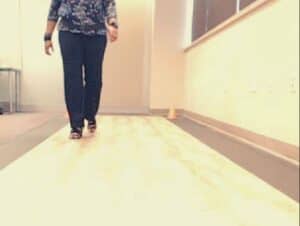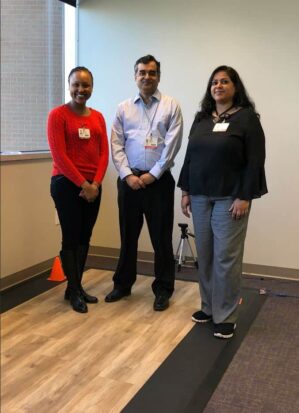Tuhin Virmani, M.D., Ph.D.
 Associate Professor, Director of Movement Disorders Program
Associate Professor, Director of Movement Disorders Program
Department of Neurology
Education
- Fellowship – Columbia University School of Medicine
- Internship and Residency – Washington University School of Medicine
- Medical School – University of Texas Southwestern Medical Center
Professional Certifications
American Board of Psychiatry and Neurology
Research Interests
 The research interests of the Virmani lab are focused on studying gait in Parkinson’s disease, and specifically the phenomenon of freezing of gait in Parkinson’s disease.
The research interests of the Virmani lab are focused on studying gait in Parkinson’s disease, and specifically the phenomenon of freezing of gait in Parkinson’s disease.
Freezing of gait is usually a late stage hallmark of Parkinson’s disease in which patients report the sensation of their “feet sticking to the ground”. Typically this initially occurs when starting to walk or on turning, but also can occur in tight spaces or doorways, or associated with a time pressure such as getting on an elevator. The freezing arrests forward momentum and can lead to falls, fear of falling, decreased quality of life, and even eventually to a home bound state. Anywhere between 50-80% of Parkinson’s patients have been reported to develop freezing of gait.
Our current project involves longitudinal analysis of objective gait measures in patients with Parkinson’s with the goal to develop a predictive algorithm to risk stratify patients into putative freezers or non-freezers and thereby develop treatments to prevent or slow the progression to a gait freezing phenotype. We utilize a pressure sensor embedded mat (Protokinetics, NJ, USA) along with accelerometers (APDM, OR, USA) to record objective gait measures.
 We are also testing this hypothesis using the putative molecule Modafinil, as it has been shown by the Garcia-Rill lab to modulate gamma oscillations in the pedunculopontine nucleus; a nucleus in the brainstem that has been implicated in the pathway leading to the development of freezing of gait. (IND: 135059; clinicaltrials.gov: NCT03083132).
We are also testing this hypothesis using the putative molecule Modafinil, as it has been shown by the Garcia-Rill lab to modulate gamma oscillations in the pedunculopontine nucleus; a nucleus in the brainstem that has been implicated in the pathway leading to the development of freezing of gait. (IND: 135059; clinicaltrials.gov: NCT03083132).
As Parkinson’s disease predominantly affects elderly individuals, we are also exploring how gait objectively changes as we age.
Contact Information

Tuhin Virmani, M.D., Ph.D.
Phone: 501-686-7235
Fax: 501-526-7145
Mailing Address:
University of Arkansas for Medical Sciences
4301 W. Markham, Slot #500
Little Rock, AR 72205
Email: TVirmani@uams.edu
Supported by:

